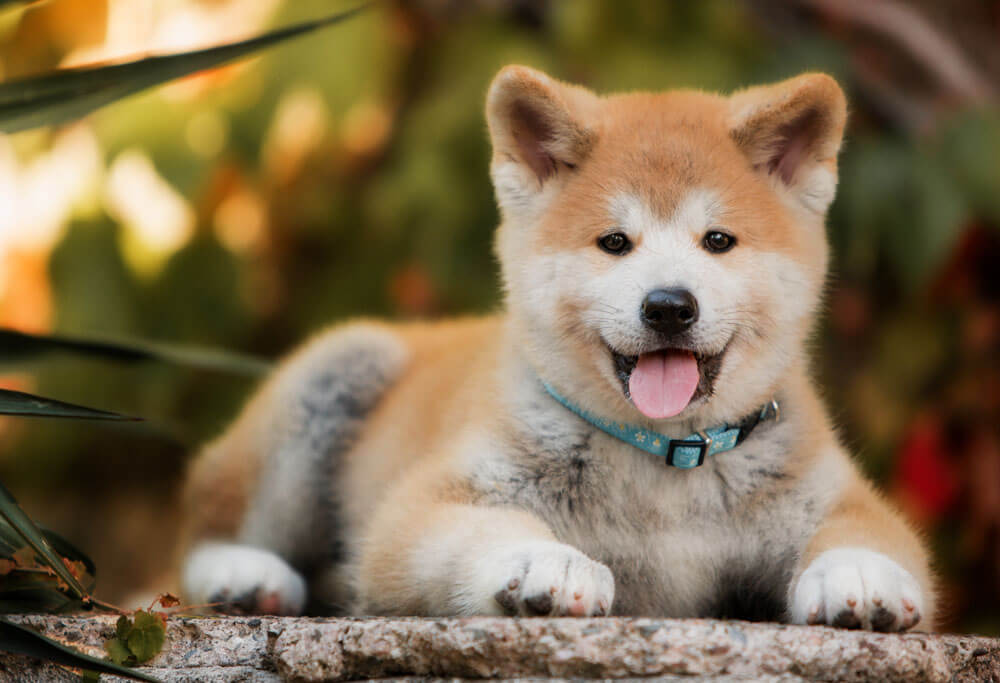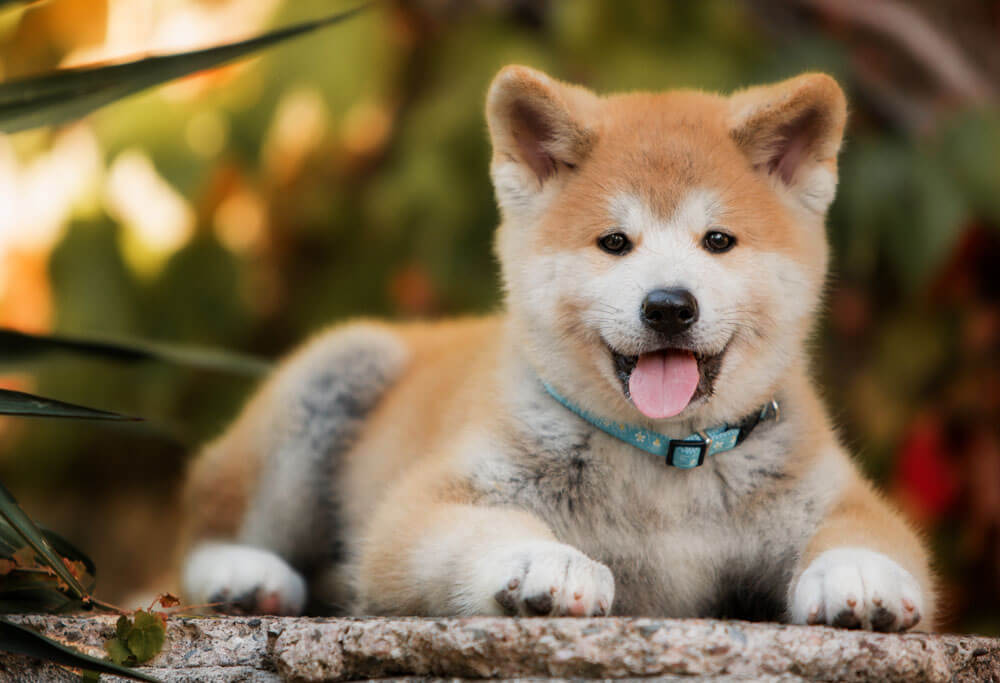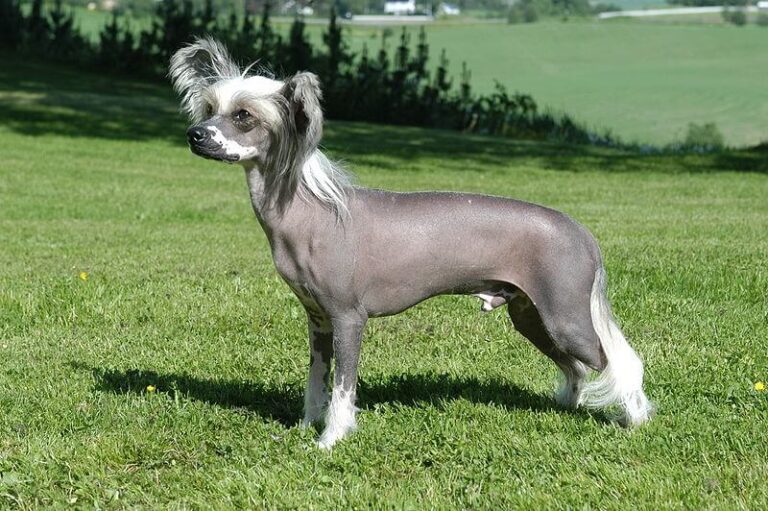Akita Dog Breed | Description, Temperament, Lifespan, & Facts
The Akita dog breed, known for its loyalty and dignified demeanor, has captured the hearts of dog enthusiasts worldwide. Originating from Japan, the Akita is revered for its courage, strength, and unwavering devotion to its family. As one of the most revered breeds in its homeland, the Akita’s history is rich and storied, deeply intertwined with Japanese culture and tradition.
Contents
Physical Characteristics and Description
The Akita is a large, powerful dog with a robust build that exudes strength and grace. Males typically weigh between 100-130 pounds, while females range from 70-100 pounds. Their height varies from 24-28 inches at the shoulder. The Akita’s double coat is thick and weather-resistant, coming in various colors, including white, brindle, and pinto.
One of the most distinctive features of the Akita is its bear-like head, with small, triangular eyes and erect, triangular ears that add to its alert expression. The Akita’s curled tail, which rests over its back, is another hallmark of the breed, adding to its majestic appearance.
Temperament and Personality
Akitas are known for their bold and independent nature, traits that have been honed over centuries as hunters and protectors. They are often described as loyal and affectionate with their families but can be reserved and aloof with strangers. This breed tends to be quiet and dignified, rarely barking without cause.
While Akitas are generally good with children in their own families, they require supervision around other kids and pets due to their strong protective instincts. Early socialization and consistent training are crucial to ensure they grow into well-rounded and well-behaved companions.
Akita Lifespan and Health

The Akita has an average lifespan of 10-15 years. Like all breeds, they are prone to certain health issues. Common health concerns include hip dysplasia, progressive retinal atrophy (PRA), hypothyroidism, and autoimmune conditions. Regular veterinary check-ups, a balanced diet, and adequate exercise can help mitigate these risks.
To maintain an Akita’s health, it’s important to be aware of their specific needs and potential genetic issues. Responsible breeding practices and obtaining a puppy from a reputable breeder can significantly reduce the likelihood of hereditary health problems.
Care and Grooming Needs
Akitas has moderate grooming needs. Their thick double coat requires regular brushing, especially during shedding seasons in spring and fall, to manage loose hair and maintain skin health. Bathing should be done as needed, typically every few months, to keep their coat clean and healthy.
Feeding an Akita a high-quality diet appropriate for their age, size, and activity level is essential. They thrive on balanced nutrition, and portion control is important to prevent obesity. Regular exercise is also crucial, as Akitas are an active breed that enjoys daily walks, playtime, and mental stimulation.
Training and Socialization
Training an Akita requires patience, consistency, and a firm yet gentle approach. They are intelligent and capable learners but can be independent and stubborn at times. Positive reinforcement methods, such as treats and praise, are highly effective.
Early socialization is vital to help Akitas become well-adjusted adults. Exposing them to a variety of people, environments, and other animals at a young age can help mitigate potential aggression and ensure they grow up to be confident and friendly dogs.
Living with an Akita
Akitas are best suited for homes with a fenced yard where they can roam and play safely. They can adapt to various living situations, including apartments, provided they receive sufficient exercise and mental stimulation. However, their protective nature means they may not be suitable for households with multiple pets or small children unless properly trained and socialized.
Akitas enjoy participating in family activities and thrive when they feel included. They are excellent companions for outdoor adventures, including hiking and jogging, thanks to their endurance and love for physical activity.
Interesting Facts and Trivia
- The Akita is a national treasure in Japan, symbolizing good health, happiness, and long life.
- Hachiko, an Akita, became a national icon in Japan for his unwavering loyalty, waiting at a train station for his deceased owner every day for nearly ten years.
- Akitas were originally used for hunting large game such as bear, boar, and elk due to their strength and courage.
Adoption and Buying Tips
When considering adding an Akita to your family, it’s crucial to choose a reputable breeder who prioritizes health and temperament. Responsible breeders will provide health clearances for both parents and allow you to meet the puppies and their mothers.
Adoption is another wonderful option. Many Akitas are in need of loving homes through rescue organizations. Whether buying or adopting, ensure you’re prepared for the responsibility and commitment required to care for an Akita.
The cost of acquiring an Akita can vary, typically ranging from $1,000 to $3,500, depending on factors such as lineage, breeder reputation, and location. Additionally, be prepared for ongoing expenses, including food, veterinary care, grooming, and training.
Conclusion
The Akita dog breed is a remarkable blend of power, loyalty, and grace. With proper care, training, and socialization, Akitas makes devoted and protective family members. Their rich history and unique characteristics make them a fascinating and rewarding breed for those willing to invest time and effort into understanding and meeting their needs. Whether you’re captivated by their noble appearance or their storied past, the Akita is truly a breed like no other.
Related: Australian Cattle Dog
Top 5 FAQs About the Akita Dog Breed
What is the origin of the Akita dog breed?
The Akita dog breed originated in Japan, specifically in the Akita Prefecture on the island of Honshu. They were initially bred for hunting large game such as bear, boar, and elk. Over time, Akitas have become esteemed as loyal companions and protectors.
Are Akitas good family pets?
Akitas can be excellent family pets for households that understand and meet their specific needs. They are loyal and protective, often forming strong bonds with their families. However, due to their independent and sometimes aloof nature, they require proper socialization and training from a young age. Supervision is recommended when Akitas is around small children or other pets.
What are the grooming requirements for an Akita?
Akitas has a thick double coat that requires regular grooming. Brushing should be done at least once a week and more frequently during shedding seasons in spring and fall. Baths can be given as needed, usually every few months. Additionally, routine care such as nail trimming, ear cleaning, and dental hygiene are important for maintaining overall health.
What health issues are common in Akitas?
Akitas are generally healthy dogs, but they are prone to certain genetic health issues. Common health concerns include hip dysplasia, progressive retinal atrophy (PRA), hypothyroidism, and autoimmune conditions such as autoimmune thyroiditis. Regular veterinary check-ups, a balanced diet, and responsible breeding practices can help manage these risks.
How much exercise does an Akita need?
Akitas are an active breed that requires regular exercise to maintain their physical and mental well-being. They enjoy daily walks, playtime, and engaging in activities such as hiking and jogging. Providing sufficient exercise is crucial to prevent boredom and potential behavioral issues. A secure, fenced yard where they can roam and play is ideal for Akitas.
- Golden Retriever Pros and Cons: What Every Pet Parent Should Know - 15 September 2025
- Cane Corso Dog Breed: Health, Care, and Lifespan - 14 September 2025
- Catahoula Leopard Dogs: Description, Temperament, Lifespan, & Facts - 21 July 2025







